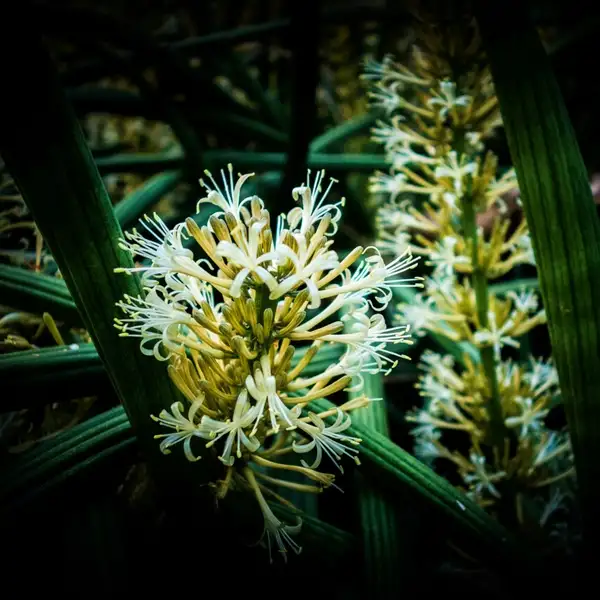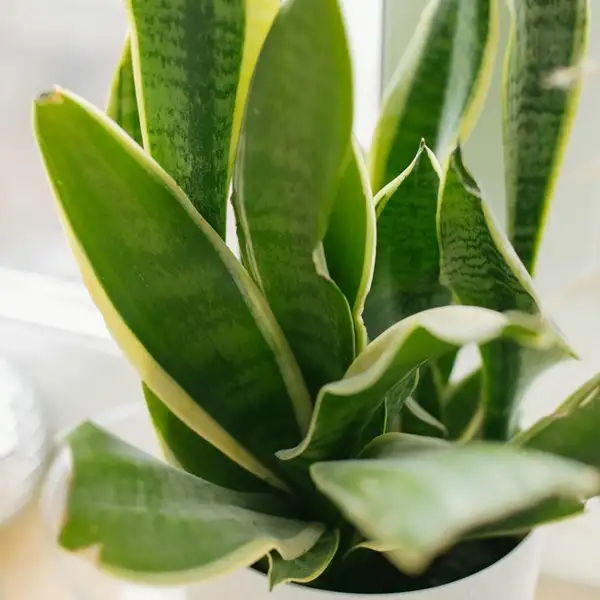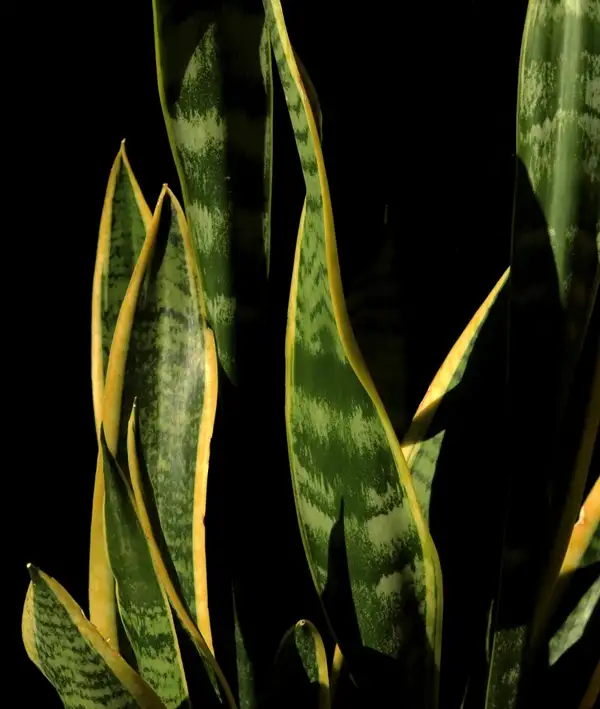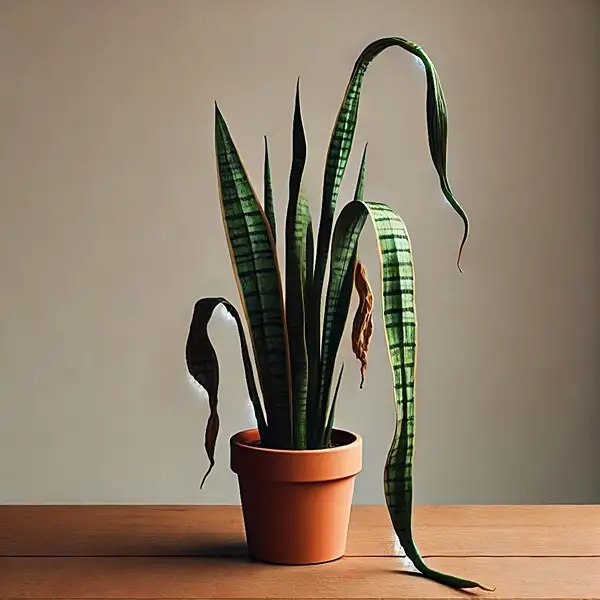Key Takeaways
| Key Takeaways |
|---|
| Unveiling the surprising truth about snake plant flowers. |
| Does a snake plant flower? Why this rare occurrence remains a mystery for many plant lovers |
| The little-known conditions that can trigger unexpected blooms |
| How stress, light, and age influence the flowering potential |
| Debunking myths – does flowering mean the plant is dying? |
| Why your indoor snake plant might never bloom – and how to change that |
| Three secret techniques to maximize your chances of witnessing this rare event |
| Beyond aesthetics – uncovering the snake plant’s hidden benefits |
Snake Plants – Characteristics and Care
I’ll never forget the first time I witnessed a snake plant in full bloom. As a passionate plant enthusiast, I had always wondered, Does A Snake Plant Flower? After growing several houseplants over the years, this particular Sansevieria trifasciata caught me by surprise.
After months of care, adjusting the lighting, and testing different watering schedules, there it was — a delicate spike of tiny white flowers emerging from the thick, sturdy leaves of my snake plant.
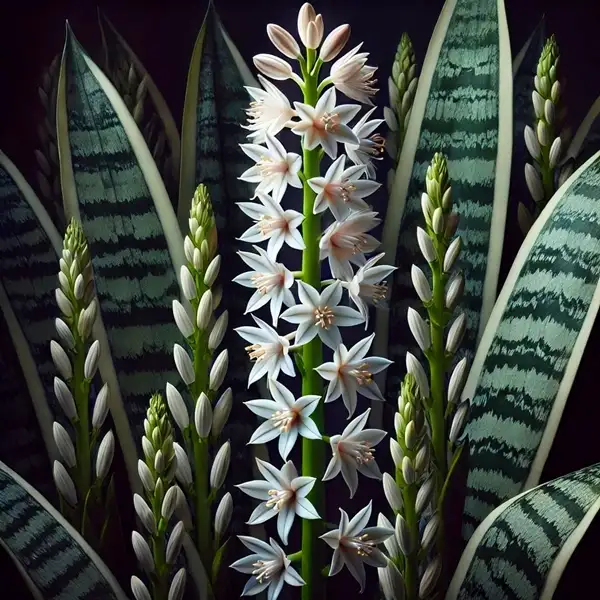
Sansevieria trifasciata popularly known as the snake plant is one of the most durable & distinctive plants found in private homes & apartments. Native to West Africa, this unique flora has a robust appeal that marks its presence quite potently in any indoor setting.
- It is well recognized for its erect & sword-shaped leaves adorned with intriguing patterns displaying various shades of green.
- Aesthetics aside, snake plants are celebrated for their sheer resilience – they thrive under varying conditions where many other houseplants would falter.
Having low maintenance requirements adds to their immense popularity amongst indoor gardeners.
- These hardy family members demand minimal water; too much can potentially inundate the roots leading to detrimental effects!
- They are incredibly tolerant of a broad range of lighting levels– from bright light to shaded corners – allowing them flexibility unheard of in other house plants.
Moreover, they hold a pedestal for being oxygen-producing warriors even at night thanks largely due to CAM Photosynthesis– making them an excellent choice as bedroom plants.
Another feather on their fulfillment cap is that they act as potent pollution fighters by pulling toxins such as benzene and formaldehyde out from household air— embodying NASA Clean Air Study’s recommendation!
Blossoming Mystery – Does A Snake Plant Flower?
A lingering question that surrounds these unassuming yet alluring greens revolves around their ability (or rather, perceived inability) to flower. The answer lies within us: YES — snake plants do indeed possess the potential to flower! This occurrence might be rare, but it does happen under certain circumstances.
The flowers themselves bear an ethereal beauty comparable only to stars; tiny clusters arranged methodically on a spike resembling vanilla-scented white pearls, adding another layer of charm upon its sturdy leaf-base structure! However, their blooming emergence is sporadic at best with numerous snake plant enthusiasts acknowledging never having seen them in flower during their years or even decades of cultivation!
4 Conditions Required for a Snake Plant to Flower
Its unanticipated flowering habit stems primarily from its environmental requirements.
| Condition | Description |
|---|---|
| Age | Snake plants typically need to mature over several years before they are capable of flowering |
| Light Exposure | While snake plants tolerate low light, they are more likely to bloom when exposed to 8-12 hours of bright, indirect light daily |
| Watering Practices | Allowing the soil to dry out between waterings and avoiding overwatering can encourage blooming |
| Fertilization | Limiting nitrogen-rich fertilizers and ensuring a balanced nutrient supply can promote flower development |

Anecdotal Evidence – Why Snake Plants Rarely Bloom
Anecdotal evidence suggests that indoor snake plants seldom bloom, as constantly controlled surroundings may not coerce them into producing flowers, compared with outdoor home-grown snake plants, which naturally cope with varying situations that lead to blooming as a survival strategy — a critical factor often absent indoors!
However, no researched statistics distinctly define exact numbers, but sporadic instances underline their capacity given optimally simulated conditions.
3 Secret Tips To Make Snake Plants Flower
For those intrigued enough to prompt these beauties to break their floral shyness—a few alterations might expedite your chances!
Botany expert Dr. Hessayon’s tips regarding stress imposition by limiting fertilizer application and straining root-run seem credible; he cites that both methodologies exploit nature’s defense mechanism, causing ‘flowering’ as part of a stress reaction response!
| Tip | Details |
|---|---|
| Controlled Stress | Introducing mild stress by reducing watering frequency or slightly restricting root space can trigger the plant’s natural survival mechanism, leading to flowering |
| Temperature Fluctuations | Exposing the plant to cooler temperatures at night can simulate natural conditions that encourage blooming |
| Consistent Light Exposure | Ensuring the plant receives consistent, bright, indirect light can enhance its chances of flowering |

3 Misconceptions about Snake Plant Flowering
| Misconception | Reality |
|---|---|
| Flowering indicates the plant is dying | Flowering signifies maturity and a healthy growth environment, not impending death |
| Snake plants never flower indoors | With optimal conditions, including proper light and care, indoor snake plants can bloom, though it’s rare |
| Overwatering promotes flowering | Overwatering can harm the plant; allowing the soil to dry out between waterings is more beneficial for blooming |
Surprising Beauty of Snake Plants
As new insights emerge, the snake plant breaks its stereotypical image. It continuously transforms into a gem, bringing vitality to urban spaces.
It actively improves air quality & enhances aesthetics with its rare, pearl-like blossoms. This natural wonder offers perfect blend of beauty & function.
Frequently Asked Questions
How long do snake plant flowers last?
They last a few weeks, emitting a delicate vanilla scent. Light, water & temperature affect their longevity.
What does it mean when a snake plant flowers?
Flowering means the plant is mature & responding to mild stress, ensuring survival through propagation. It signals health, not decline.
How rare is snake plant flowering?
Flowering is rare indoors because stable conditions lack natural stress triggers like fluctuating temperatures & controlled watering.
Should I repot my snake plant if it flowers?
No! Avoid repotting. The plant thrives in its current environment & repotting may disrupt its growth.
Is snake plant flower lucky?
Yes! Many believe blooming brings luck & positive energy. It also reflects good plant care & vitality.
Are snake plant flowers toxic?
Yes! these flowers contain mild toxins that can cause stomach issues if ingested. Keep them away from pets & children.
How do you know if a snake plant is stressed?
A stressed snake plant may droop, yellow or develop mushy leaves due to overwatering, poor light or root-bound conditions.


